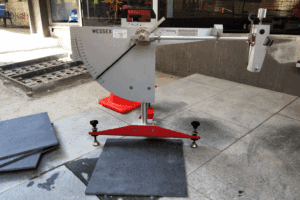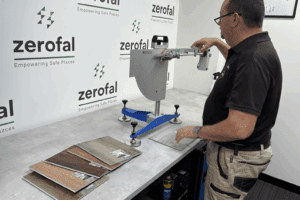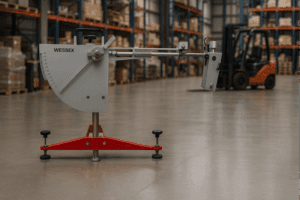NATA Accreditation: Why It Matters
Use only a NATA accredited slip testing service
- NATA accreditation is the benchmark for slip testing in Australia.
- Non-accredited reports risk rejection in audits, insurance claims, and legal proceedings.
- Zerofal’s reports are NATA-accredited, traceable, and defensible.
Not all slip resistance test reports carry the same weight. Only NATA-accredited testing can be relied upon for compliance, insurance, or legal defence. Choosing a provider without accreditation could leave a project exposed.
Understanding NATA
The National Association of Testing Authorities (NATA) is Australia’s peak body for laboratory accreditation. It ensures compliance with ISO/IEC 17025, the international standard for testing and calibration laboratories. NATA-accredited labs are audited regularly, must prove staff competency, proficiency and maintain strict calibration procedures.
Why Accreditation Matters
Slip resistance testing under AS 4586:2013 and AS 4663:2013 provides the evidence base for compliance with the National Construction Code. If the testing is not NATA-accredited, the results may be challenged. Courts, insurers, and certifiers expect NATA traceability as proof of independence and technical rigour.
Risks of Unaccredited Testing
Unaccredited providers may use the same equipment but without the oversight of external audits, their processes are not verified. This means results can be dismissed, handovers delayed, and insurance claims denied. The apparent savings in cost are quickly outweighed by the risk of rejection.
Zerofal’s Accreditation
Zerofal holds NATA accreditation for both wet pendulum and dry floor friction testing. Every report carries NATA traceability, giving clients confidence that the results are accurate, defensible, and compliant with AS 4586:2013, AS 4663:2013, and HB198:2014.
Best Practice for Clients
When commissioning slip testing, clients should ask three questions: Is the provider NATA-accredited? Will the report reference AS 4586:2013 or AS 4663:2013? Does the report clearly carry the NATA logo and accreditation number? If the answer to any of these is no, the results should not be relied on for compliance.
NATA accreditation is not an optional extra. It is the foundation of reliable, defensible slip resistance testing. Without it, compliance, safety, and liability are all at risk.
Protect your project with results that stand up everywhere it counts
Book NATA-accredited slip testing with Zerofal today.
Explore more

Colour, Grit and Surface Finish: How Subtle Differences Change Slip Ratings (AS 4586:2013)
Colour, grit and finish change slip resistance. Learn why P-ratings vary across tile ranges and coatings

Why One Slip Test Isn’t Enough for Product Lines (AS 4586:2013)
Slip resistance varies across colours and finishes. Learn why one AS 4586 test cannot certify an entire product line.

Industrial Slip Resistance: Dust, Boots & Coating Drift (AS 4663:2013)
: Industrial floors change fast. Learn how dust, coatings and machinery reduce slip resistance and why AS 4663 onsite testing is essential.
